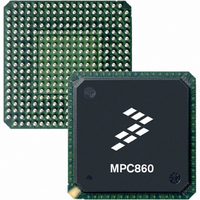MC68MH360ZP33L Freescale Semiconductor, MC68MH360ZP33L Datasheet - Page 260

MC68MH360ZP33L
Manufacturer Part Number
MC68MH360ZP33L
Description
IC MPU 32BIT QUICC 357-PBGA
Manufacturer
Freescale Semiconductor
Specifications of MC68MH360ZP33L
Processor Type
M683xx 32-Bit
Speed
33MHz
Voltage
5V
Mounting Type
Surface Mount
Package / Case
357-PBGA
Lead Free Status / RoHS Status
Contains lead / RoHS non-compliant
Features
-
Available stocks
Company
Part Number
Manufacturer
Quantity
Price
Company:
Part Number:
MC68MH360ZP33L
Manufacturer:
FREESCALE
Quantity:
1 831
Company:
Part Number:
MC68MH360ZP33L
Manufacturer:
MOTOLOLA
Quantity:
672
Company:
Part Number:
MC68MH360ZP33L
Manufacturer:
Freescale Semiconductor
Quantity:
10 000
Part Number:
MC68MH360ZP33L
Manufacturer:
FREESCALE
Quantity:
20 000
Company:
Part Number:
MC68MH360ZP33LR2
Manufacturer:
Freescale Semiconductor
Quantity:
10 000
- Current page: 260 of 962
- Download datasheet (5Mb)
System Integration Module (SIM60)
(CLKO1 and CLKO2). The PLL synchronizes these clock signals to each other. These clock
signals are discussed in the following paragraphs.
6.5.5.1 SPCLK. SPCLK is supplied to the PIT and SWT sub-modules in the SIM60. SPCLK
is always the EXTAL frequency or EXTAL/128, depending on the configuration of the divide-
by-128 prescaler. When EXTAL frequency > 10 MHz is selected by configuration pins
(MODCK1-MODCK0 = 01), then the PLL is clocked with the EXTAL frequency and SPCLK
is EXTAL/128. (i1616.e. When MODCK is 11 --> SPCLK is equal to EXTAL).
6.5.5.2 GENERAL SYSTEM CLOCK. This basic clock is supplied to all other modules and
sub-modules on the QUICC, including the CPU32+, the RISC controller, and most other fea-
tures in the communication processor module (CPM). The general system clock also sup-
plies the SIMCLK to the SIM60 in normal device operation. The general system clock is the
same as the CLKO1 frequency, and the CLKO2 signal is 2 the general system clock in nor-
mal device operation. The general system clock defaults to VCO/2 = 25 MHz (assuming a
25-MHz system frequency).
The frequency of the general system clock can be changed dynamically with the CDVCR,
as shown in Figure 6-7. This configuration is called slow-go mode.
The general system clock can be operated at three frequencies. Normal operation is the
highest frequency (25 MHz in a 25-MHz system). The general system clock can also be
operated at a low frequency and a high frequency. The definition of low is made in the DFNL
value in CDVCR; the definition of high is made in the DFNH value in CDVCR.
The frequency of the general system clock can be changed dynamically by software. The
user may simply cause the general system clock to switch to its low frequency. However, in
some applications, there is a need for high frequency during certain periods. An example is
in interrupt routines, etc., that need more performance than the low frequency operation, but
must consume less power than in normal operation. The SIM60 allows a method to auto-
matically switch between low and high frequency operation.
6-16
NOTES:
1. NORMAL = (CSRC = 0) OR (INTEN2–INTEN0 < INTERRUPT) OR (RRQEN & RISC NOT IDLE)
2. LOW POWER = NORMAL
VCO/2 (25 MHz)
DFNL DIVIDER
DFNH DIVIDER
Figure 6-7. General System Clock Select
Freescale Semiconductor, Inc.
For More Information On This Product,
MC68360 USER’S MANUAL
Go to: www.freescale.com
DFNH <> 00
DFNH = 0
NORMAL
LOW POWER
GENERAL SYSTEM
CLOCK
MOTOROLA
Related parts for MC68MH360ZP33L
Image
Part Number
Description
Manufacturer
Datasheet
Request
R
Part Number:
Description:
Manufacturer:
Freescale Semiconductor, Inc
Datasheet:
Part Number:
Description:
Manufacturer:
Freescale Semiconductor, Inc
Datasheet:
Part Number:
Description:
Manufacturer:
Freescale Semiconductor, Inc
Datasheet:
Part Number:
Description:
Manufacturer:
Freescale Semiconductor, Inc
Datasheet:
Part Number:
Description:
Manufacturer:
Freescale Semiconductor, Inc
Datasheet:
Part Number:
Description:
Manufacturer:
Freescale Semiconductor, Inc
Datasheet:
Part Number:
Description:
Manufacturer:
Freescale Semiconductor, Inc
Datasheet:
Part Number:
Description:
Manufacturer:
Freescale Semiconductor, Inc
Datasheet:
Part Number:
Description:
Manufacturer:
Freescale Semiconductor, Inc
Datasheet:
Part Number:
Description:
Manufacturer:
Freescale Semiconductor, Inc
Datasheet:
Part Number:
Description:
Manufacturer:
Freescale Semiconductor, Inc
Datasheet:
Part Number:
Description:
Manufacturer:
Freescale Semiconductor, Inc
Datasheet:
Part Number:
Description:
Manufacturer:
Freescale Semiconductor, Inc
Datasheet:
Part Number:
Description:
Manufacturer:
Freescale Semiconductor, Inc
Datasheet:
Part Number:
Description:
Manufacturer:
Freescale Semiconductor, Inc
Datasheet:











